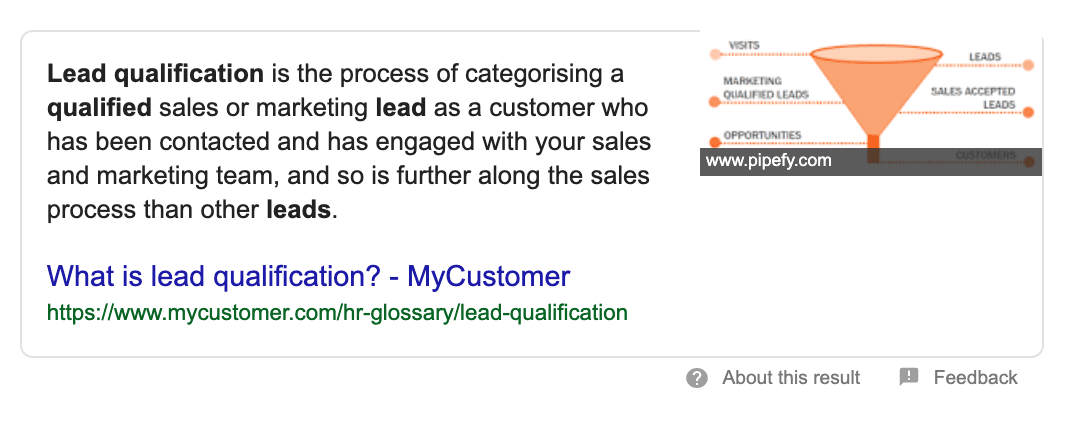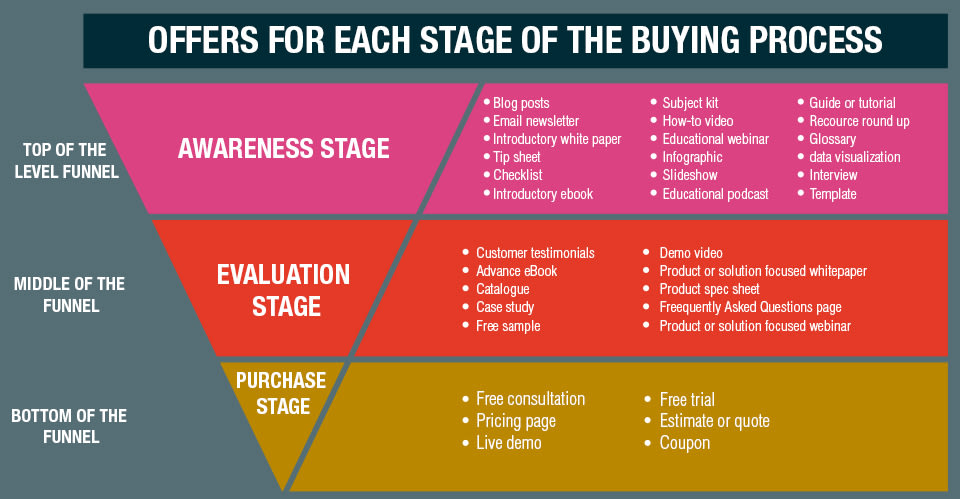In sales and marketing, there’s endless talk about techniques for generating more leads – but what are you actually going to do with those leads once you’ve got them on board?
Leads don’t pay the bills, customers do.
To convert those prospects into profit (kind of the whole point), you need to know you’re generating leads from people who:
- Match your buyer personas
- Have a genuine interest in what you’re selling
- Are capable of making the purchase
What you don’t want to do is waste time and money on leads that don’t end up buying. Instead, you want to pinpoint the prospects that are most valuable to your brand and make these the priority of your marketing and sales strategies.

This starts with lead qualification, which allows you prioritise your most important leads, filter out the ones you don’t need and then refine your lead generation strategies to improve the quality of your leads across the board.
There are two main types of lead qualification you need to know about:
- MQL: Marketing qualified leads
- SQL: Sales qualified leads
In this article, we’re going to look at both types of lead qualification in detail and how you can integrate them to drastically increase the number of leads you convert into paying customers.
What is lead qualification?
Before we take a closer look at MQL and SQL, let’s quickly explain what lead qualification is, in case you’re still new to the concept.
Lead qualification is a process that enables you to assess the quality of your leads. At its most basic, lead qualification will qualify or disqualify leads, based on the criteria you define, so you’re not wasting resources on prospects that don’t meet your requirements.
For example, if you’re only selling to people in your local area, your lead qualification system should aim to disqualify prospects who are living elsewhere. Likewise, if you’re only selling to people in your country, then you don’t want to waste resources on prospects who live overseas.
In reality, your lead qualification requirements are going to be far more complex than that.
You’ve got a number of buyer personas you want to target and lead qualification’s first job is to make sure you’re dealing with prospects that match those personas. At the very least, you want this kind of process in place during the lead generation stage of your marketing strategies and the early stages of your lead nurturing follow-up messages.
The sooner you can rule out disqualified leads, the more efficient your marketing and sales processes are going to be.
However, you can take lead qualification to a far more advanced level by using automation tools to qualify leads at each stage of your sales funnel. Prospects’ needs and expectations change as they progress along the purchase cycle. Which means the value of these leads for your brand can also change and your marketing/sales messages should adapt to that.
For more details on advanced lead qualification, check out our extensive guide to lead qualification and scoring.
For now, though, we’re going to focus our attention on marketing qualified leads and sales qualified leads.
What are marketing qualified leads (MQLs)?
Marketing qualified leads (MQLs) refer to leads that you’ve identified as being likely to convert into a customer. These leads only become MQLs when they pass your criteria for what you consider a valuable lead to look like.
But you need a system in place that can recognise this behaviour and distinguish between leads that do and don’t qualify.
For example, let’s imagine a web design software provider publishes a study on the latest industry trends as a lead generation strategy. This study is designed to generate leads from potential customers, not students looking to study web design at university or writers like myself looking for a web design study to quote from.

So this agency is going to want an MQL process in place to prevent it spending money on ads for students and another one to stop its sales team wasting a phone call on me after I’ve downloaded their study for another purpose.
What are sales qualified leads (SQLs)?
Sales qualified leads (SQLs) are leads that your sales team (or sales processes) have identified as being more likely to convert into a customer. Once again, leads should only become SQLs if they meet your criteria and those that don’t should either be disqualified or placed on appropriate list for lower-quality leads.
You don’t necessarily need to discard leads that don’t qualify as SQLs.
You can automate marketing and sales processes to deal with lower-quality leads until they either convert or demonstrate characteristics that meet your SQL requirements.
Again, you find out more information about this by reading our lead qualification guide.
MQL vs SQL: What’s the difference?
In most cases, the key difference between MQLs and SQLs is that marketing qualified leads come at much earlier stages of the sales funnel.

Your MQL processes do most of their work during the lead generation and early lead nurturing stages. Essentially, these are preparing your leads so that – by the time they reach your sales team/processes – they’re already identified as highly likely to convert into customers.
Normally, SQL processes kick in at later stages of the sales funnel. There can be quite a lot of overlap here but, eventually, your SQL processes are going to take over and qualify your leads before your sales team/processes step in to guide them towards the purchase.
Sales qualified leads should be very close to pulling the tigger.
Or, more to the point, your sales team is only dealing with leads that are worth their time and effort.
Why are MQLs and SQLs important?
The main purpose of MQL and SQL systems is to make your marketing and sales processes more efficient. Lead generation and nurturing require a lot of time, money and effort – so you want to make sure you’re bringing in high-quality leads that are likely to buy from you.
At the same time, there’s a limit to how much you can automate on the sales side of things. Your sales team should only be spending time on leads that are almost guaranteed to turn into customers and the rest of their efforts should focus on encouraging existing customers to make further purchases.
This is what having the right MQL and SQL systems in place achieves.
That’s not all, though.
By placing a series of MQL and SQL systems across each stage of your sales funnel, you can turn lead qualification into an advanced lead nurturing strategy that delivers targeted messages to prospects based on how they interact with your brand.
This enables you to actively increase the quality of your leads, turn more MQLs into SQLs and, ultimately, convert more prospects into paying customers.
Using MQL & SQL to convert more leads into customers
The first MQL process we have in place on our website is our web forms. These forms use a technique called conditional logic to extract relevant information from prospects as they sign up.
This automatically qualifies our leads on-site, filtering out the those that don’t meet our criteria. We’re also able to score the quality of these leads, based on the services they’re looking for, the size of their business and the budget they have to work with.
Essentially, the most profitable leads become our priority.
Our next MQL process happens through email marketing where we engage prospects to confirm what they need and check how serious they are about doing business. This process entirely automated and we qualify these leads once again, based on how prospects engage with our emails.
We use multiple email lists to send targeted messages to prospects, depending on how they interact with our emails, to increase engagement and incentive. Now, we’re increasing the quality of our leads and maximising the number of prospects who become potential customers.
Prospects only pass our next MQL system when they demonstrate behaviour that proves they’re ready to do business.
This is where our SQL systems take over and qualify leads for our sales team. Highly engaged prospects with the right kind of budget, project requirements and expected lifetime customer value top our list and this means our sales team always knows who to prioritise.
Almost everything that happens up until this point is automated so our sales team can focus everything on closing the deal.
As for leads that don’t pass the SQL filter, those that have potential to meet our requirements in the future are placed on marketing lists and targeted with messages designed to help them make the grade.
This means we’re constantly maximising the number of leads that turn into viable prospects for our sales team – and most of this process is automated. Our marketing team can focus its efforts on improving the messages we send out to leads and refining our automations.
Make more of your leads
All the metrics that matter most in marketing and sales – profit, ROI, ROAS, conversion rate, etc. – starts with generating the right kind of leads. Next, you need to filter out the prospects that don’t offer enough value and focus your attention on the leads that truly matter.
With a strong understanding of marketing qualified leads (MQLs) and sales qualified leads (SQLs), you have the means to prioritise your prospects and adapt your marketing messages to convert more of them into customers.




